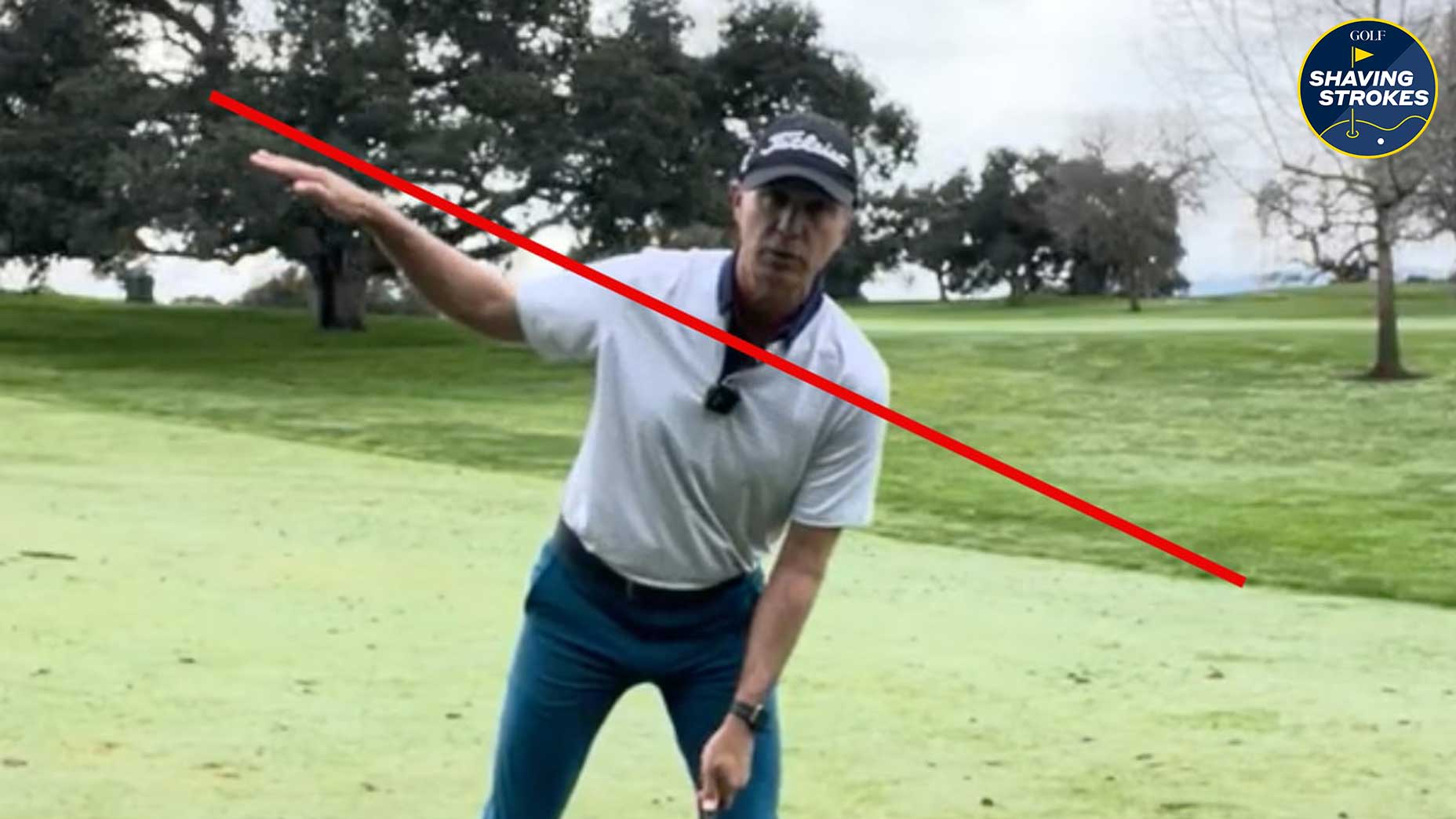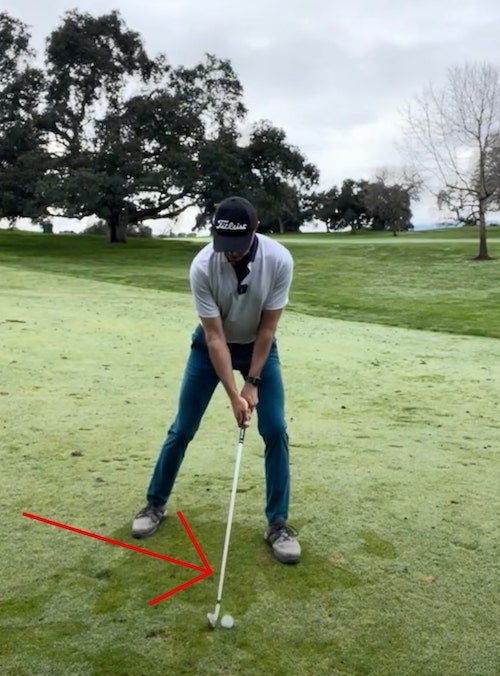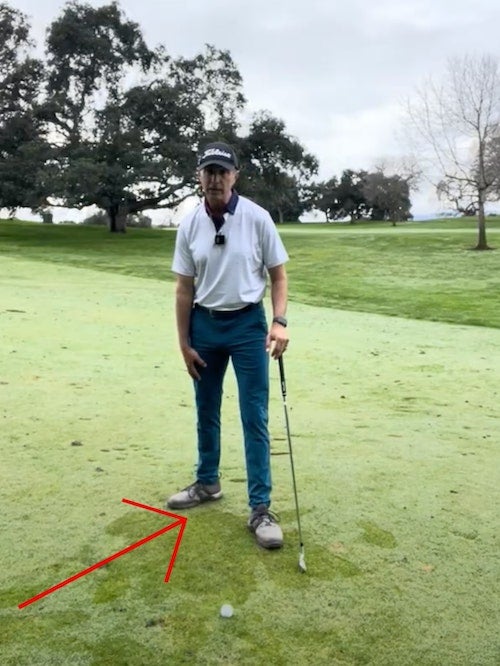Golf Logo
2 easy setup tweaks to conquer tricky downhill lies
SHARE
- Share on Facebook
- Share on Twitter
- Share by Email
Over $140 of value - Just $39.99
InsideGOLF
When dealing with a downhill lie, don't guess on how to hit the shot. Use these tips from GOLF Top 100 Teacher Josh Zander instead.
Courtesy Josh Zander
Welcome to Shaving Strokes, a GOLF.com series in which we’re sharing improvements, learnings and takeaways from amateur golfers just like you — including some of the speed bumps and challenges they faced along the way.
Hitting a downhill lie in golf is one of the most difficult shots in the game, no matter how skilled the player is.
Not only are the feet uneven at address, but gravity is working against you, meaning your body is literally being pulled down toward the front end of the slope, which makes it tougher to maintain the proper balance to hit a solid shot.
For that reason, many amateurs chunk or thin shots off a downhill lie because they just don’t understand what adjustments they need to make in order to hit a good shot.
But with the help of GOLF Top 100 Teacher Josh Zander, you can make two simple setup tweaks that will allow you to keep your balance, maintain a solid swing path and finally conquer the nasty downhill lie. Check out his tips below.
As mentioned above, part of what makes hitting off a downhill lie so difficult is having your weight thrown off. If you approach this type of shot as you would when the ball is on a flat surface, Zander reminds players that gravity will pull them toward the slope.
“When I find myself on a severe downhill lie, if I let my balance go, my body will naturally go down this hill,” Zander says.
So Zander suggests making two easy adjustments at setup to allow yourself to avoid that from happening. This will give you a better balance and a better angle of attack to correctly hit the ball.
“First, you need to move the ball forward in your stance,” he says. “And number two, you need to pull your trail foot back.”
The photo below demonstrates where the ball should be when hitting off a downhill lie.

“Now, why do I want the ball forward in my stance?” he asks. “We’ve [probably] all heard that we want our shoulders with the slope, so if you move the ball forward in your stance and then go to hit the ball, you can see how it gets my shoulders aligned down the hill.”
Next, Zander reminds players that they need to maintain enough speed on this type of shot. To help do that, he says to drop that trail foot back, which creates more space to rotate in the backswing.
The photo below shows how this should look.

“I still want to be powerful off of this [downhill lie], so I want to be able to make a nice, big turn in my backswing. But the hill keeps me from turning if I stand with a squared stance,” Zander explains. “But if I pull my trail foot back, it gives me a much bigger hip turn — which allows me to be more powerful.”
So when you’ve got a tricky downhill lie, remember to make some simple adjustments before taking your shot. By simply putting the ball forward in your stance and dropping your trail foot back, you’ll have a better chance of hitting it flush.

View Product

Golf.com Photographer

Golf.com Editor